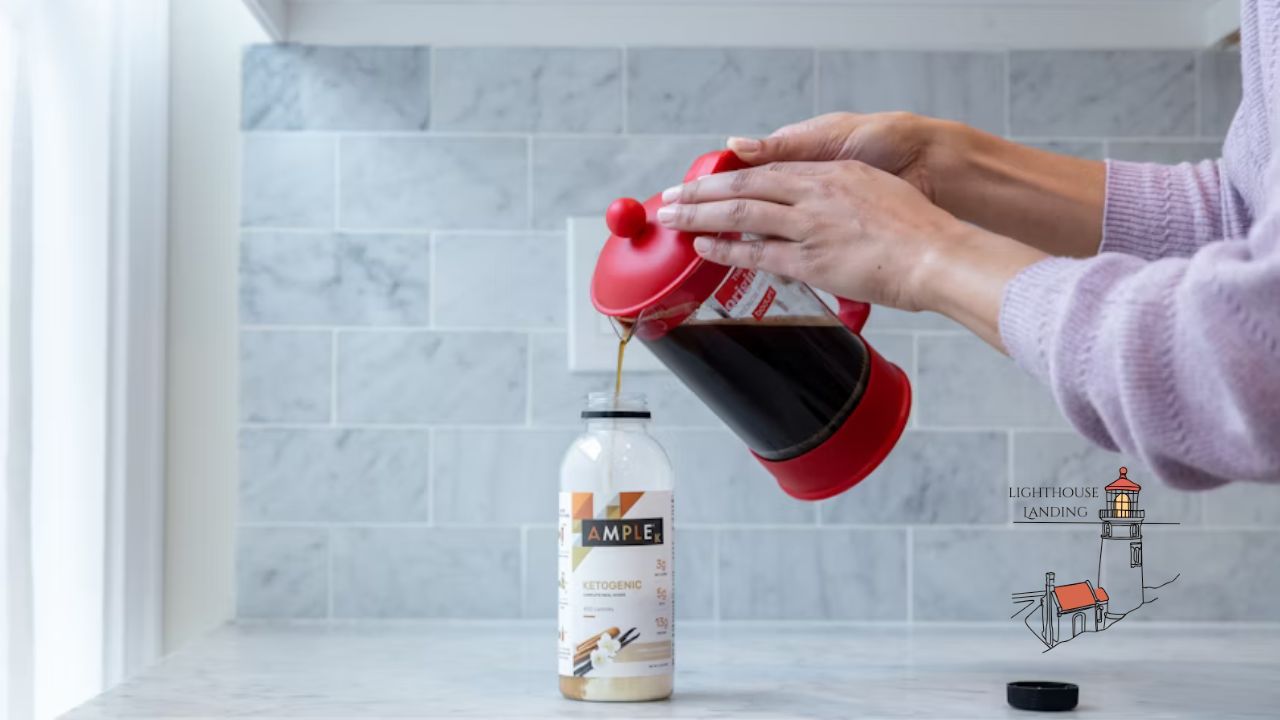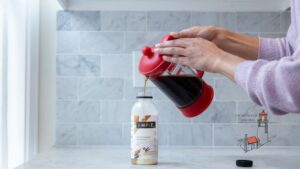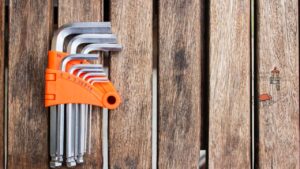Have you ever faced a stain so stubborn it felt like a permanent part of your home? An enzymatic cleaner might just be the miraculous solution you’ve been searching for. These powerful formulas are designed to break down specific types of messes at a molecular level, making them disappear like magic.
Unlike traditional chemical cleaners that simply lift stains, an enzymatic cleaner uses natural proteins to digest organic materials like pet urine, blood, grass, and food spills. This guide will explore everything you need to know about these incredible cleaning agents, from how they work to where you can use them for the most astonishing results.
Top Enzymatic Cleaners at a Glance
Navigating the world of cleaning products can be overwhelming. To simplify your search, here is a quick overview of some of the best-performing enzymatic cleaners on the market, celebrated for their effectiveness and reliability.
| Product Name | Primary Use | User Rating | Key Feature |
|---|---|---|---|
| Rocco & Roxie Stain & Odor Eliminator | Pet Urine & Stains | 4.6 / 5.0 | Certified safe for all carpets |
| Nature’s Miracle Advanced Stain & Odor | Severe Pet Messes | 4.5 / 5.0 | Fast-acting, deep-cleaning formula |
| Biokleen Bac-Out Stain Remover | Multi-Purpose Organic | 4.7 / 5.0 | Plant-based, no artificial fragrances |
| Simple Solution Extreme Stain & Odor | Tough Repeat Stains | 4.6 / 5.0 | 3X stronger pro-bacteria formula |
| Sunny & Honey Pet Stain & Odor Miracle | All Surfaces | 4.4 / 5.0 | Safe for kids, pets, and the planet |
What Exactly Is an Enzymatic Cleaner?
At its core, an enzymatic cleaner is a cleaning solution that contains specific enzymes designed to act as catalysts. These enzymes speed up the chemical reaction that breaks down organic soils, turning them into smaller, water-soluble particles that can be easily wiped or rinsed away.
Think of it like digestion. Your stomach produces enzymes to break down the food you eat. In the same way, an enzymatic cleaner “digests” stains, completely eliminating them rather than just masking the problem.
The Science Behind the Magic: How Enzymes Work
To truly appreciate the power of an enzymatic cleaner, it helps to understand the science. These cleaners are formulated with different types of enzymes, each targeting a specific kind of molecule. This specialization is what makes them so incredibly effective.
Key Enzymes and Their Targets
- Protease: This is the powerhouse for protein-based stains. It breaks down messes like blood, urine, feces, vomit, grass, and egg. Protease is the star player in most pet stain removers.
- Amylase: This enzyme targets starches. It’s fantastic for breaking down starchy food spills like gravy, pasta, potatoes, and sugar-based sauces.
- Lipase: Got a greasy or oily stain? Lipase is the enzyme you need. It effectively dissolves fats, oils, and grease, making it perfect for food stains, lipstick, and body oils on upholstery.
- Cellulase: This enzyme works by breaking down cellulose, the fibrous material in plants. It helps soften fabrics, release dirt trapped in fibers, and can even tackle tough grass stains.
The beauty of a high-quality enzymatic cleaner is that it often contains a blend of these enzymes. This multi-enzyme formula creates a versatile cleaning solution capable of tackling a wide range of complex organic messes.
Why Choose an Enzymatic Cleaner Over Traditional Options?
With a sea of cleaning products on store shelves, you might wonder what makes an enzymatic cleaner special. The advantages are significant, especially when dealing with organic stains that are notoriously difficult to remove.
Complete Odor and Stain Removal
Traditional cleaners often use harsh chemicals and strong fragrances to cover up smells. An enzymatic cleaner works differently. By breaking down and consuming the organic matter causing the stain, it eliminates the source of the odor completely. This is why they are the go-to solution for pet accidents; they remove the scent molecules that encourage pets to re-mark an area.
One user, Sarah M., shared her experience: “My cat had an accident on my brand-new rug, and I thought it was ruined. I tried everything, but the smell just wouldn’t go away. A friend recommended an enzymatic cleaner, and it was a total game-changer. After one treatment, both the stain and the smell were completely gone. It’s a miracle product!” Her review, rated 5/5 stars, highlights a common success story.
Safety and Environmental Friendliness
Many enzymatic cleaners are formulated to be non-toxic and biodegradable. Because they rely on natural biological processes, they are often a safer choice for households with children and pets. They break down into harmless components like carbon dioxide and water, making them a more eco-friendly option compared to cleaners filled with phosphates, chlorine, and other harsh chemicals.
Versatility on Multiple Surfaces
While you should always test a small, inconspicuous area first, a good enzymatic cleaner is safe for a variety of surfaces. This includes carpets, upholstery, hardwood floors, tile, concrete, and even laundry. Their gentle yet effective action means you can clean delicate fabrics without worrying about damage or discoloration.
The Many Uses of an Enzymatic Cleaner
The applications for an enzymatic cleaner are surprisingly vast. They are not just for pet owners. Anyone dealing with organic stains can benefit from having a bottle on hand. Let’s dive into some of the most common and effective uses for this cleaning powerhouse.
The Ultimate Solution for Pet Owners
For pet owners, an enzymatic cleaner is an absolute necessity. Dogs and cats are prone to accidents, and the resulting stains and odors can be a nightmare to handle.
Tackling Urine Stains and Odors
Pet urine is a complex substance containing uric acid crystals, which are not water-soluble and bind tightly to surfaces. This is why the smell lingers and often returns on humid days. Standard carpet cleaners can’t break down these crystals.
An enzymatic cleaner with protease is specifically designed to dismantle the uric acid, permanently eliminating the stain and the odor. This is critical for preventing pets from returning to the same spot to mark their territory.
User Review: Mark T. gives the Simple Solution Extreme a 4.5/5 rating, stating, “We have two puppies, and house training has been a challenge. We were about to replace our carpets until we tried this enzymatic cleaner. It doesn’t just hide the smell; it destroys it. Now, the puppies are no longer attracted to their old ‘spots’.”
Removing Vomit and Feces
Accidents happen, and cleaning up vomit or feces is an unpleasant task. An enzymatic cleaner simplifies the process. After removing the solid waste, a liberal application of the cleaner will break down the remaining organic proteins, leaving the area fresh and sanitary.
Around the House: Everyday Spills and Stains
Beyond pet messes, an enzymatic cleaner is a versatile tool for general household cleaning. Its ability to tackle a wide range of organic materials makes it a valuable addition to any cleaning arsenal.
In the Kitchen
The kitchen is a hotspot for organic stains. From spilled wine and coffee to greasy splatters on the stovetop, an enzymatic cleaner can handle it all.
- Countertops and Floors: Safely clean up food spills without using harsh chemicals near food prep areas.
- Drains: Pouring a small amount of enzymatic cleaner down the drain can help break down grease and food particle buildup, preventing clogs and eliminating odors.
- Trash Cans: A quick spray and wipe-down will digest any lingering gunk and neutralize unpleasant garbage smells.
In the Laundry Room
Stains on clothing can be incredibly frustrating. An enzymatic cleaner can be used as a pre-treatment to fight tough stains before they set in.
- Grass and Mud: Perfect for kids’ sports uniforms. The cellulase and protease enzymes break down grass and dirt.
- Blood Stains: A protease-based enzymatic cleaner will make quick work of blood spots. Always use cool water, as heat can set protein stains.
- Sweat and Body Oils: Lipase enzymes are excellent for breaking down the oils and proteins in sweat stains, especially around collars and underarms.
In the Bathroom
The bathroom is another area where organic materials build up. An enzymatic cleaner can be a powerful ally.
- Toilet Bowls: It can help break down organic waste and uric acid buildup, reducing rings and odors.
- Showers and Tubs: Use it to tackle soap scum and body oils that accumulate on surfaces.
- Grout: The enzymes can penetrate the porous surface of grout to break down mildew and other organic grime. While it helps, for tough mold you might still need a dedicated mold remover.
Specialized and Unexpected Applications
The power of an enzymatic cleaner extends beyond typical household chores. Its unique properties make it suitable for some very specific and challenging cleaning tasks.
Cleaning Concrete and Outdoor Surfaces
Did you know you can use an enzymatic cleaner as a highly effective concrete cleaner? Concrete is porous and can absorb stains like oil, grease, and pet urine. An enzymatic cleaner seeps into the pores and digests these stains from the inside out. This is particularly useful for driveways, garage floors, and patios. Unlike a harsh TSP cleaner, the enzymatic option is often gentler on the surface and the surrounding environment.
Automotive Care
Your car is exposed to all sorts of messes. An enzymatic cleaner can be used to treat upholstery stains from spilled coffee or food. It’s also gentle enough for cleaning fabric seats and carpets.
While you wouldn’t use it for mechanical parts, it’s interesting to note the variety of specialized cleaners in the automotive world. For instance, a mass air flow sensor cleaner is a highly specific solvent designed for delicate electronic sensors. This highlights the importance of using the right cleaner for the right job, and for organic stains in your car’s interior, an enzymatic cleaner is the perfect choice.
Maintaining Sporting and Tactical Gear
After a long day at the range, cleaning your equipment is crucial. While specialized cleaning kits for rifles contain solvents and lubricants designed for metal and carbon buildup, other gear can benefit from different treatments. Body armor carriers, tactical vests, and range bags can accumulate sweat, dirt, and grime. A spray-down with an enzymatic cleaner can neutralize odors and break down the organic residue without damaging the synthetic fabrics.
It’s a testament to the versatility of an enzymatic cleaner that it finds a place alongside highly specialized products. From a delicate glass cleaner for your optics to a powerful rifle bore solvent, each has its purpose. For the organic grime on your gear, the enzymatic cleaner is unmatched.
How to Use an Enzymatic Cleaner Correctly
To get the most out of your enzymatic cleaner, it’s important to use it correctly. While the process is simple, following a few key steps will ensure you achieve the best possible results.
Step-by-Step Guide for Stain Removal
- Remove Excess Waste: Before applying the cleaner, blot up any excess liquid with a clean cloth or scrape away any solid material. Avoid rubbing, as this can push the stain deeper into the fibers.
- Test in a Hidden Area: Always apply a small amount of the enzymatic cleaner to an inconspicuous spot (like inside a hem or under a piece of furniture) to test for colorfastness.
- Saturate the Area: Don’t be shy with the product. To be effective, the cleaner needs to make full contact with the entire stain, including the padding and subfloor underneath if the stain has soaked through. Saturate the stained area and a small perimeter around it.
- Let It Dwell: This is the most crucial step. The enzymes need time to work their magic. This “dwell time” can range from 10-15 minutes for light stains to several hours, or even overnight, for severe or set-in stains. Cover the area with a damp towel to keep it moist, which helps the enzymes stay active.
- Blot and Air Dry: After the dwell time, blot the area with a clean, dry cloth to absorb the excess moisture and lifted stain residue. Allow the area to air dry completely. The drying process can take up to 24-48 hours. As it dries, the enzymes will continue to work, and any remaining odors will dissipate.
- Vacuum: Once the area is completely dry, vacuum it to restore the texture of the carpet or fabric.
Common Mistakes to Avoid
- Using Other Cleaners First: Avoid using chemical cleaners or steam cleaners before applying an enzymatic cleaner. The heat and chemicals can set the stain or neutralize the enzymes, rendering them ineffective.
- Not Using Enough Product: A light spray isn’t enough for deep stains. You must saturate the area to ensure the cleaner reaches the entire stain.
- Not Allowing Enough Dwell Time: Patience is key. Rushing the process and not giving the enzymes enough time to work is a common reason for poor results.
Choosing the Right Enzymatic Cleaner for Your Needs
With so many brands on the market, selecting the best enzymatic cleaner can feel like a chore in itself. Here are a few factors to consider to help you make an informed decision.
Enzyme Formula
Look for a product with a multi-enzyme formula. A cleaner that contains protease, amylase, and lipase will be more versatile and effective on a wider range of stains. If you are primarily dealing with pet urine, ensure the formula is strong in protease.
Scent
Some enzymatic cleaners are unscented, while others have a light, fresh fragrance. If you are sensitive to smells, an unscented version is your best bet. If you prefer a scent, choose one that is mild and pleasant, not one that just masks odors.
Surface Compatibility
Check the product label to ensure it is safe for the surfaces you intend to clean. Most are safe for carpets, upholstery, and hard floors, but it’s always wise to double-check, especially for delicate materials like wool or natural stone.
Personal Note: A Convert’s Perspective
As a writer and researcher, I approach product claims with a healthy dose of skepticism. The concept of an “enzymatic cleaner” sounded a bit like marketing jargon at first. However, after adopting a rescue dog who brought both joy and a few unfortunate accidents into my home, I became a true believer. My personal net worth isn’t tied to any cleaning company, but the value an enzymatic cleaner has added to my peace of mind is immeasurable.
I’ve used it to salvage a favorite armchair, remove a red wine spill that I was sure would be permanent, and keep my home smelling fresh despite my furry companion. It has consistently outperformed every other cleaning solution I’ve tried for organic stains, earning its permanent spot in my cleaning caddy. This is not a paid endorsement; it’s the honest experience of someone who has seen the remarkable results firsthand. The effectiveness of a good enzymatic cleaner is something you truly have to see to believe.
Frequently Asked Questions (FAQs)
Q: Is an enzymatic cleaner safe for my pets and children?
A: Most high-quality enzymatic cleaners are formulated to be non-toxic and safe for use around pets and children once dry. However, it’s always best to keep them away from the treated area while it’s wet. Always read the product label for specific safety instructions.
Q: Can I use an enzymatic cleaner on hardwood floors?
A: Yes, many enzymatic cleaners are safe for sealed hardwood floors. They are great for cleaning up pet accidents or food spills. Be sure to wipe the area dry after cleaning and avoid letting the liquid pool on the surface for extended periods to prevent water damage.
Q: How long does it take for an enzymatic cleaner to work?
A: Dwell time varies depending on the severity of the stain. For fresh stains, 10-30 minutes may be sufficient. For old, set-in stains, you may need to let the product sit for several hours or even overnight. Keeping the area damp helps the enzymes work longer.
Q: Will an enzymatic cleaner remove old, set-in stains?
A: Yes, an enzymatic cleaner is one of the best options for old stains, but it may require more than one application. The enzymes can re-hydrate and break down the aged organic matter. Patience and repeated treatments are key.
Q: What is the difference between an enzymatic cleaner and an oxygen cleaner?
A: An enzymatic cleaner uses enzymes to break down organic stains. An oxygen cleaner (like OxiClean) uses sodium percarbonate, which releases oxygen bubbles when mixed with water. These bubbles help lift stains from fibers. Both are effective, but enzymatic cleaners are specifically superior for protein-based stains and odor elimination.
Q: Can I make my own DIY enzymatic cleaner?
A: You can create a fermenting mixture with fruit peels, sugar, and water, but it’s a lengthy process (it can take months) and the results are inconsistent. Commercial enzymatic cleaners are formulated with specific, concentrated enzymes for targeted performance and are generally much more effective and reliable.
Q: Can I use an enzymatic cleaner in my carpet cleaning machine?
A: Some enzymatic cleaners are designed to be used in carpet cleaning machines, but many are not. Using a non-approved cleaner could damage your machine or be less effective. Always check the product label for instructions on machine use. For best results with deep stains, it is often better to use the enzymatic cleaner as a targeted pre-treatment.
Admin Recommendation
Your Ultimate Guide to Grand Rivers KY Lighthouse Landing Resort
Discover Paradise at Lighthouse Landing Resort: Your Gateway to Kentucky Lake Adventures












